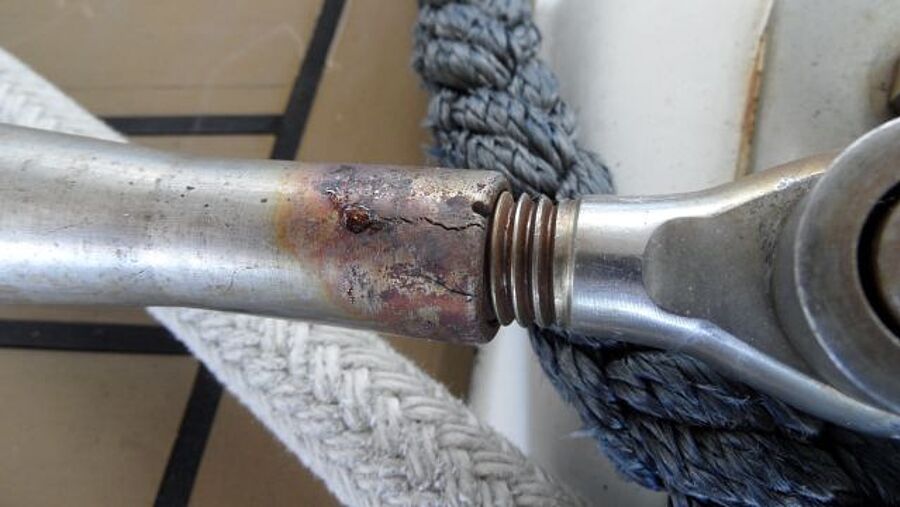In winter, when the mast is laid down, the rigging should be subjected to a thorough visual inspection. A more detailed visual inspection can often reveal many defects. Pins and cotters should be checked and, if necessary, replaced. In general, experts advise against securing with split rings on the standing rigging. Corrosion and hair cracks are usually easy to detect. If it is not clear how serious the damage is, or how you should correct it, it is a good idea to consult a professional rigger. In any case, you should commission a rigger to conduct a rigging check at reasonable intervals. These intervals will depend entirely on the usage of the vessel. The rigging of a regatta racer or a sailing yacht used for long trips is certainly subject to more stress than that on a normal touring boat. And whether the standing rigging is made of wire, rod, carbon fibre or PBO will also determine how often it should be replaced.

